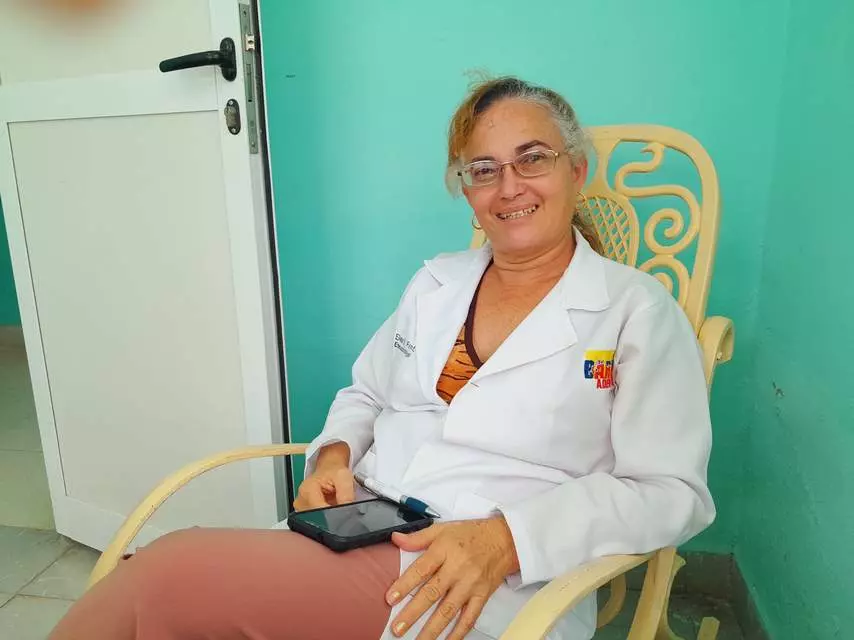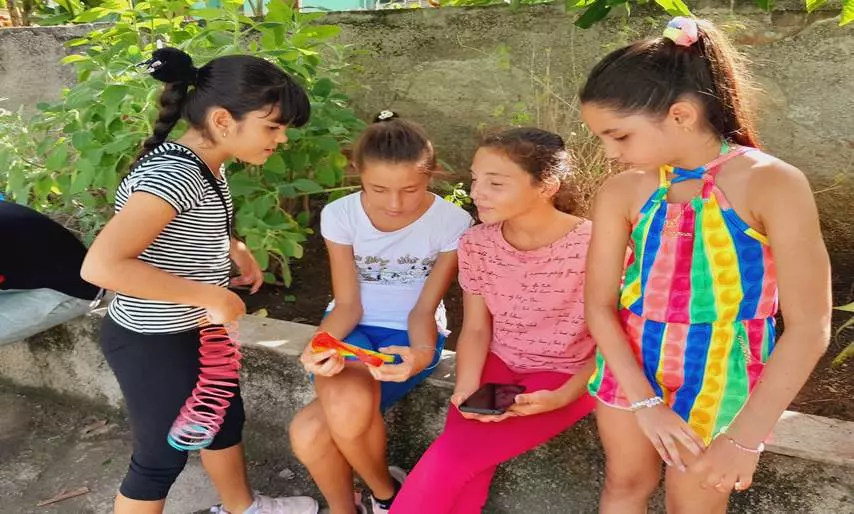Faced with a certain tendency to increase the number of cases of pediatric patients diagnosed with type one diabetes in the province of Holguin, comes the timely explanation of the specialist in Endocrinology and head of this service in the pediatric hospital Octavio de la Concepcion de la Pedraja, Dr. Elena Rodriguez Font.
She has dedicated much of her life and experience to the care of children suffering from this chronic disease in which the pancreas does not produce enough insulin, resulting in elevated levels of glucose in the blood. Regarding the behavior of this condition in this northeastern territory, she shares some ideas to be taken into account by families that have a member of pediatric age in their composition.
What are the particularities of diabetes in childhood?
-This condition, as I prefer to call it, has among its particularities that the pancreas, a gland located in the abdomen, does not produce insulin and by not producing this hormone that transports glucose, the food consumed with a high glucose load will not reach the tissues where it should reach and therefore it accumulates in the blood. When this happens, hyperglycemia occurs, where glycemia begins to come out in the urine, with a negative impact on target organs and vascular structures, which can bring serious complications to children.
“This is an ailment that within its parameters it is advisable to provide the patient with insulin in the first instance, which comes in an injectable vial that must be administered four times a day and this is the first care they must take. To comply with their treatment they use a device donated by the Swiss company Novo Nordisk, which all children in Cuba have and which replaces the syringe. It is a device in which the needle is minimal, it does not cause pain, they do not have to keep it refrigerated, it has an adjustable dose through that pen and it is very comfortable.
“The second thing to comply with is the diet, since they should not eat sweet or fried foods, in which they should ensure that they supply the body with a fixed calorie in correspondence with their age and physical activity. These are two fundamental pillars of treatment to be fulfilled in the care of these diabetic children. As long as a diabetic child has his proper treatment, releases insulin when he eats, if the food given carries the right calories, with the required quality, the child can have perfect health in relation to his disease.
“This must be coupled with physical activity, the third pillar of treatment, and the fourth pillar lies in diabetes education because we do nothing by giving the right dose and not educating the patient. The first thing is the psychological aspect of each patient, in order to educate them so that they learn to live with this condition”.
diabetes, children

Dr. Elena Rodríguez Font, specialist in Endocrinology and head of this service at the Pediatric Hospital Octavio de la Concepción de la Pedraja. Photo: Maylín Betancourt Verdecia
What is the most common type of diabetes in children?
-In this group, the most frequent is type one diabetes, and this usually has an immunological damage. Although in recent years type two has also been seen in children, which is very rare. The major difference between the two is that type two usually appears in obese children, with a resistance to insulin where the pancreas is able to produce insulin but obesity does not allow it to act as a hormone and receptor. Although they have insulin, they do not use it properly. These cases are not treated with insulin and what they would take would be a diet with Metformin, a drug that we use in these cases.
“However, children with type one diabetes do have immunological damage where the beta cells of the pancreas do not produce insulin and it must be administered subcutaneously”.
diabetes, children
Have you determined any age range in which one is more prone to debut with diabetes or is there no defined pattern?
It can appear in adolescence, in a 10-year-old child, at 18 or 19 years of age, which is still considered pediatric age, but in recent years the world is noticing an increase in this age group under 5 years of age and we have patients of two, three years, 14, 15 months and we even had a case of a two-month-old baby who debuted with the disease.
“While the age can be variable, even we who have about 207 type one diabetic children in the province, distributed in the 14 municipalities have seen an increase in recent years in children under five years of age. This is a complex age, since a child who debuts at 14 months or two years old, when he is 16 years old is still in pediatric age with 14 years of evolution of the disease.
“But thanks to their control, check-ups and appropriate treatments, we see children who have been with their disease for 14 years without complications, which is our goal. Contrary to what happens in adults, who after six years with the disease present complications due to previous hypertension or an aging body, to which we add vascular damage and disobedience to treatments. However, these children live without eating something sweet, fried food and they get used to it, so they achieve a very good metabolic control and present fewer complications”.
Despite the fact that the evolution of diabetes is better in pediatric ages without complications, what are the most frequent ones?
-Among the most common is the affectation in the target organs that can be damaged when there is a bad metabolic control can be the sight, they can cause diabetic retinopathy, the autonomic nervous system can be damaged when sweating occurs without hypoglycemia. The kidneys, one of the vital organs, are also affected, that is why patients with more than 20 years of evolution are given Enalapril, as a renoprotective medication, and they are followed with microalbuminuria check-ups.
“Regarding complications, a thesis of a resident was carried out in which a significant number of patients studied showed that very few had incipient renal damage. These complications are the ones we want to avoid, that is why we follow up and control their health in order to identify complications as soon as possible.
“I am satisfied with the work done because at present I do not have any blind children with diabetes, nor with vascular lesions. It is not possible to speak of damage in pediatric patients, despite having more than a decade of evolution of their disease. That is why we talk more about control than about complications; we want them to be well controlled. It is always better to talk to them about good metabolic control than about what is going to happen to them”.
In Cuba, as in other countries, children with diabetes receive specialized medical care for the management of their disease. There are educational and support programs to help them learn about diabetes and how to manage it properly.
- Intermediate Technician Training in Anesthesia in Holguin - 8 de July de 2025
- Systemic Sclerosis, a Disease in Need of Publicity - 1 de July de 2025
- Holguin with the first Center for Research Resources in Health - 28 de June de 2025

